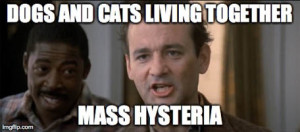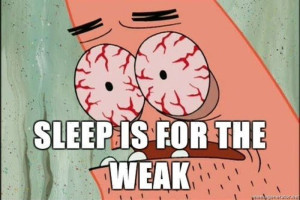I love comedy, so when it came time to start writing these blogs, comedy was one of the first places I started to search for scientific discovery. And though I did find information about a lot of aspects of comedy, I never would have expected this: The Tanganyika Laughter Epidemic of 1962.
The Laughter Epidemic takes the concept of laughter being contagious and cranks it up to a whole new level. The story goes that the laughter started with three girls in a town called Kashasha, and from there the intoxicating guffaws spread to 95 students shutting down school and causing panic. This affliction went on to cause hundreds of people to laugh uncontrollably for six to eighteen months, in the end forcing 14 different schools to close at one time or another.
When I first read this story, I couldn’t believe it. I checked to see if the post was from April 1st, I googled the scientist who cited the event and, after all that checked out and the epidemic seemed to be a real thing, I decided to investigate the situation further.
As it turns out, the Tanganyika Laughter Epidemic was a real epidemic but there was nothing funny about it at all; it was a large-scale anxiety attack. Christian F. Hempelmann presented the argument at the International Society for Humor Studies Conference at Northeastern Illinois University in 2003 and in an interview with the Chicago Tribune, saying that the incident was caused by “an underlying shared stress factor in the population.” According to Hempelmann, laughter was just a symptom of the mass hysteria, also know as mass psychogenic illness, that also caused other symptoms such as pain, fainting, respiratory problems, and crying fits. Mass psychogenic illness often occurs in people who have little power to control their world or to express their emotions, so the mind finds what ever way it can to release.
What was the situation in Tanganyika that drove these students to feel so overloaded with stress that they had no ability to cope with. Hempelmann tells us, “In 1962, Tanganyika had just won its independence. The young people involved reported that they were feeling stressed by the higher expectations of their teachers and parents.” So, at a time when most people would be joyous and content with newly won independence, these students were debilitatingly stressed over school? Does this seem all a little too mundane? It should, because stress is quite a common thing in our lives, and attacks of mass psychogenic illness happen far more often than you’d expect.
The list of examples that last an entire year may stop with the Tanganyika Laughter Epidemic, but smaller cases can be seen all around us. According to The Guardian, in 2007 students from William Byrd high school in Virginia suffered a wave of “twitching, tremors, dizziness and headaches” that spread from student to student like a bug. Dr Jim Bolton, consultant psychiatrist at St Helier hospital in Surrey, said that this was very likely to be a case of mass hysteria as well. Just as with the Epidemic, the victims were students bogged down by stress with no way to express it. A similar event occurred in New York in 2012, except this time the twitching fits were only spread between teenaged girls all on the school’s soccer team. If you’re interested, Discovery.com goes deeper into the history of mass hysteria here.
Stress is a very real yet intangible struggle that we all must deal with. To add to the problem, it is often difficult to gauge someone else’s stress, as seen by how these mass stress attacks baffle school officials. Dr Lorraine Lange, the superintendent of the students from WIlliam Byrd high school, even said, “I don’t think students here are differently stressed from any other high-school students,” and yet somehow they were stressed enough to break down in such a way. Seeing as how we’re all students here, we all know that stress is a part of the daily routine. To avoid a Penn State fit of mass hysteria this finals week, please read The Cleveland Clinic’s ten ways to ease stress. If you still find yourself swamped with stress, read this quote by the fourteenth and current Dalai Lama,
“If a problem is fixable, if a situation is such that you can do something about it, then there is no need to worry. If it’s not fixable, then there is no help in worrying. There is no benefit in worrying whatsoever.”
Im no Buddhist, but that sentiment has gotten me through a lot of hard and stressful times. Thanks for reading.












